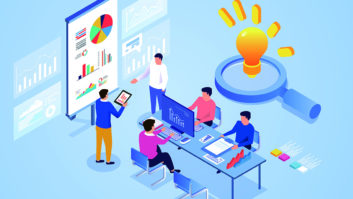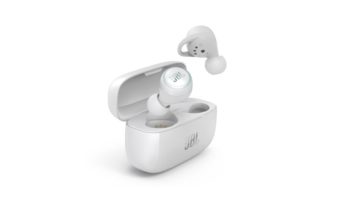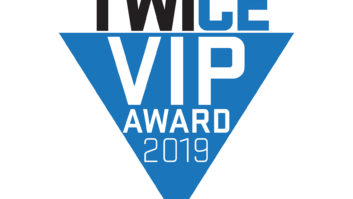
The biggest high-tech story to watch is the shift by traditional hardware, software and platform companies to deliver their offerings as services to business customers and consumers.
But there are big challenges.
Many high-tech companies have yet to make this change, and doing so will be a huge strategic and financial undertaking. If well executed, however, they will be empowered to provide service offerings faster, deliver continuous and more personalized services, disrupt and enter new markets, and generate a continuous and consistent stream of higher revenues and profits.
As-A-Service Business Model
“As-a-service” is the term often used to describe this profound industry transition. It means delivering value through on-demand, highly scalable, plug-and-play services.
In the Software as a Service (SaaS) business, for example, instead of manufacturing software on disks and shipping them to brick-and-mortar stores, that same software can be placed in the cloud. Customers can subscribe to the service by paying a subscription fee. By doing so, companies no longer have to maintain costly on-site computer servers or grapple with multiple software versions.
The race towards this new business model is well underway. Software and content industries have already moved in this direction. But many hardware companies, such as manufacturers of smartphones, PCs, servers, networking equipment and any products using Internet of Things (IoT) technology, are just getting started.
This is a problem. It’s also an opportunity.
Most of their product features and functionalities are defined by the software embedded on top of the hardware. Using this new model, companies can roll out new functions after the product has been taken into operations.
As-a-service will become a required business model for any company selling “intelligent” or “smart” products whose value lies in the features and functionalities defined by software.
Shifting to this business model quickly is especially critical for these manufacturers. Facing a sluggish high-tech device market, providing value-added services offers new opportunities and revenue streams critical for their near- and long-term success.
The path to delivering as-a-service will be neither easy nor inexpensive. Accenture has learned that many underestimate how much this will cost and how vital it is to begin this transition now. Embracing the as-a-service model will impact most corporate functions including sales and marketing, research and development, finance and administration, customer support, and logistics.
Many hardware companies are late to this shift and will be challenged to catch formidable companies already well entrenched in this business model such as Amazon, Facebook, and Google. These trailblazing companies are now scaling their service offerings, entering new markets, and attracting huge numbers of customers. Many hardware companies have not made this shift quickly enough to offset declines in market growth and compete in this expanding and lucrative market.
The underlying trend making it necessary for these companies to adopt a services model swiftly is widespread and multi-dimensional disruption. Accenture identifies three disruptions of paramount importance:
Disruption #1: Internet and Social Media
The Internet and social media disruptions have reshaped the electronics and high-tech market. Amazon, Facebook, Google, as well as other high-tech companies that operate on pure digital platforms such as the Internet and mobile, have transformed their markets and are continually entering and disrupting adjacent markets. Providing news-as-a-service, music-as-a-service, and video-as-a-service are prime examples. Operating as all-digital businesses, they gain unlimited scale and versatility to launch new offerings quickly at minimal costs. As such, they thrive in established markets.
Leveraging digital technologies, they are adept at using analytics to gain more valuable customer insights, innovate more, and respond faster and more intelligently to market changes. Their broad influence is changing how consumers and companies buy technology, view content, and communicate socially.
To compete, the only viable option for a traditional high-tech player is to embrace the as-a-service model.
Shifting to services is a major challenge for many of them. Traditional operating models cannot match the speed and capabilities of their formidable competitors. These hardware companies need to embrace new ways of providing services and make digital the central strategic focus of their companies.
Disruption #2: Consumer Technology Products Become Platforms
Stand-alone consumer technology products are becoming obsolete. IoT and cloud computing are converting every day products into interconnected, multi-faceted platforms. Functioning as multi-purpose, interactive platforms, smartphones, tablets, gaming consoles, TVs, and security cameras transcend their original purpose. They provide their suppliers with consistent pipelines for reaching consumers, and generate valuable analytics about how platforms are used.
Disruption #3: New Business Models For A New Industry
As promising as this is, serious and systemic challenges associated with security, privacy and logistics of launching a services model need to be overcome. In too many cases traditional high-tech companies have been slow to address these issues. As a result, user confidence and the inherent value of the service has been undermined. For many, the main challenge is figuring out when and where to begin.
So where to begin? High-tech hardware manufacturers need a structured approach to the problem that starts with forming a strategy.
As part of this, a key component is recognizing that as-a-service permeates virtually all aspects of a business. As such, every contingency must be planned. Research and development functions need to be equipped to handle swift and continuous product evolution. Real-time insights into customer behaviors and product performance must be gathered to change the way sales and marketing teams operate.
Pricing and billing needs to be more responsive to fluctuating demand. New products and platforms require supply chains in multiple cloud modes with comprehensive connected tools and processes.
For each company, a separate as-a-service business unit should operate alongside a company’s traditional business. To minimize corporate disruption while the new business grows, the older business can be ramped down over time. This dual and coordinated approach controls disruption and eases the transition.
Final Thoughts
This business model change is undeniable. It is a complex and expensive challenge. To succeed, companies must be realistic, and ready to embrace, the scale and investment costs.
On multiple levels transitioning to a service business model is a major strategic undertaking. Yet as daunting as this is, the industry is accelerating full throttle in this direction. In 2016 the as-a-service transition will accelerate and expand. High-tech companies, particularly traditional hardware manufacturers, must embrace this fundamental change.
Whether they do this, at what speed, and to what level of effectiveness will be the most compelling and important story to track this year.
Sami Luukkonen is the global managing director for Accenture’s Electronics and High-Tech Group. He can be reached at [email protected].













